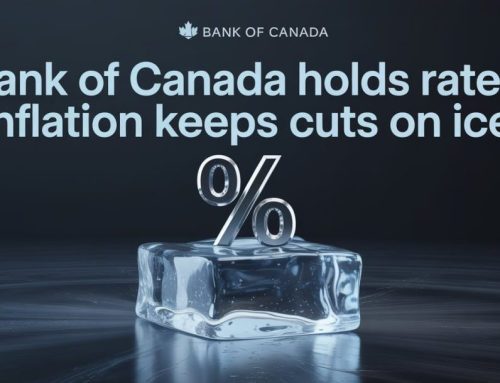When considering purchasing a home, one of the key factors to consider is the mortgage you can qualify for. Mortgage qualification depends on several factors, including your financial situation and the prevailing interest rates. In today’s blog, I’m going to explore how changes in mortgage rates have affected your qualifying eligibility.
Mortgage Qualification
The biggest factor in determining how much you will qualify for is your debt-to-income ratio. Simply put, this is the carrying costs of your mortgage (and other debt) in relation to your income. As the mortgage rate impacts your carrying costs, it’s a key factor in determining how much you are eligible to borrow.
The effect of a 0.10% change in rate on your maximum borrowing amount can vary depending on the rate and income. For example, on a $125,000 income, an increase in rate from 5.44% to 5.54% would mean a reduction in borrowing power of roughly $5,000.
On a $300,000 income, the same increase from 5.44% to 5.54% would result in a reduction of approximately $13,000 in qualifying eligibility.
Mortgage Rates Today vs. Two Years Ago
As you are likely aware, mortgage rates have increased considerably over the last couple of years. Two years ago, the lowest 5 year fixed rate for an insured mortgage was 1.84%. Today, it’s 4.84%. A difference of exactly 3%.
On a $700,000 mortgage at 1.84% amortized over 25 years, the monthly payment would be $2,910.39. At 4.84%, it jumps to $4,007.71.
While this is a pretty large difference, mortgage qualification is not based on your actual mortgage payment. It’s based on the payment calculated from the much higher qualifying rate. This is not a ‘real’ payment, but just a payment used to qualify you for the loan. This is known as the mortgage stress test.
Mortgage Stress Test
The stress test is the higher of the benchmark rate set by the Bank of Canada (currently 5.25%) or 2.00% above your actual mortgage rate. Two years ago, the benchmark rate was the same as where it is today, 5.25%. As rates were well below this, adding 2% would still be lower than 5.25%, which means the higher benchmark rate would have been used to qualify most mortgages at that time.
For example, 1.84% + 2.00% = 3.84%. Significantly lower than the 5.25% benchmark rate.
Today’s lowest 5 year fixed rates range from 4.84% to 5.44% (depending on your situation). Adding 2% puts the qualifying rate substantially higher than the benchmark rate of 5.25%, therefore, the higher rate is used for qualifying. 6.84% to 7.44% in this case.
Qualifying for a Mortgage Today Vs. Two Years Ago
In 2021, a $150,000 household income would qualify you for a mortgage of roughly $750,000 if amortized over 25 years or $810,000 with a 30 year amortization. Your actual mortgage rate wasn’t a factor since most mortgages qualified based on the benchmark rate of 5.25%.
Today, the same income would qualify you for roughly $645,000 based on the lowest insured rate of 4.84%. $105,000 less than it would have been two years ago.
The lowest fixed rate with a 30 year amortization is 5.44%. Despite the higher rate, the maximum mortgage you would qualify for is virtually identical. The longer amortization offsets the higher amount which brings the payments very close with each option.
4.84% amortized over 25 years = $3,692.82 monthly.
5.44% amortized over 30 years = $3,613.56 monthly.
The small payment difference of $79.26 per month results in a qualifying difference of almost exactly $3,000.
Conclusion
As mortgage rates increase, your debt-to-income ratio increases along with it. This means less borrowing power. If you’re hoping to qualify for a higher amount, then check out my blog on 7 Ways To Qualify for a Larger Mortgage.








Leave A Comment